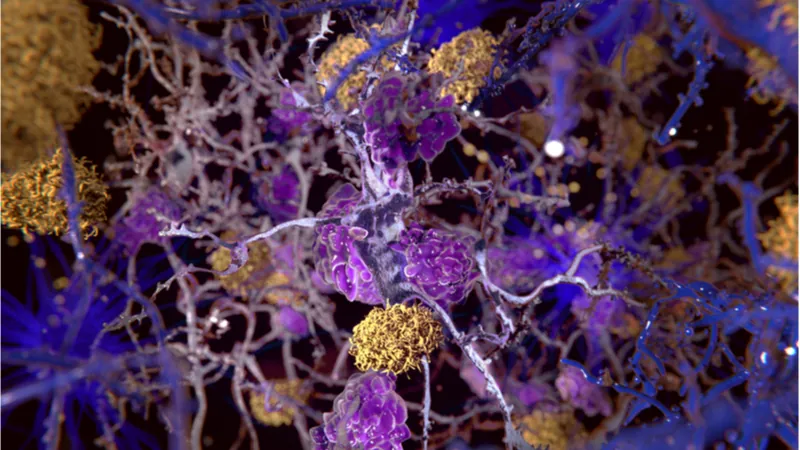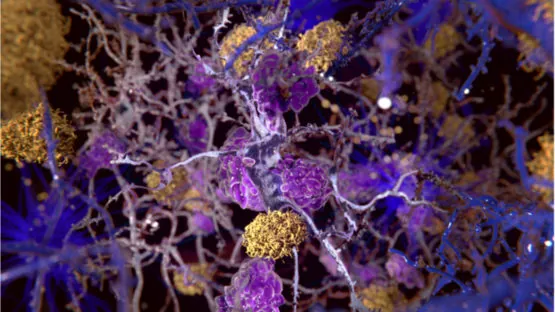A group of researchers has proposed three robust transplantation techniques for fighting microglia-related conditions, such as Alzheimer’s, and potentially boosting our cognitive abilities [1].
The sentinels of the brain
Microglial cells form the backbone of our brain’s immune system. They perform a wide variety of functions, including tracing pathogens, inducing inflammatory reactions, and facilitating the removal of harmful debris from the central nervous system (CNS). Like everywhere else in the human body, things can go terribly wrong with microglia. They are prone to genetic mutations and overactivation that leads to chronic inflammation. Microglial dysfunction is thought to be an important factor behind the bulk of age-related neurodegenerative diseases; Alzheimer’s, Parkinson’s, and frontotemporal dementia result at least partially from microglia failing in their sentinel and housekeeping duties [2].
Scientists have been mostly helpless when it comes to microglia dysfunction, but one of the avenues currently being explored is microglia transplantation. Unfortunately, as the authors of the current study rightly note, traditional methods of microglia transplantation are ineffective, as the transplanted cells only replace a small minority of the resident microglia [3].
Depopulate to repopulate
As the researchers discovered, the problem stems mostly from the fact that the existing dense microglia population impedes the proliferation of the transplanted cells. The solution proposed in this study may sound radical, but it apparently works – at least in mice. Prior to the transplantation, the scientists treated the mice with a compound that kills microglia cells. When the new cells were introduced soon after, they successfully proliferated, taking the place of the diseased resident microglia. To validate the results, the researchers created transgenic mice with cells that express GFP (green fluorescent protein). Cells that originated in the donor mice continued to emit fluorescence, enabling the scientists to detect them in their new locations.
The scientists explored three transplantation methods, with only one using mature microglia as the source. The first is to transplant bone marrow in order to perform microglia replacement by bone marrow cells (mrBMC). It is based on the ability of bone marrow stem cells to differentiate into various cell types, including microglia. Having detected the scarcity of microglia at the target, BMCs dutifully differentiated to repopulate the niche. This method resulted in almost complete repopulation: more than 90% of the old microglia were replaced with the new and healthy ones.
The downside of this approach is the limited availability of bone marrow transplants, as their procurement involves a procedure that is invasive and painful for donors. For their next step, the researchers attempted to use blood instead of bone marrow: microglia replacement by peripheral blood (mrPB). Peripheral blood mononuclear cells (PBMCs) have been reported to be able to differentiate into a wide array of cell types, including endothelial cells, hepatocytes, smooth muscle cells, osteoblasts, and microglia [4]. Blood-derived microglial cells were able to replace more than 80% of the resident microglia, performing only slightly worse than bone marrow cells.
Are these even microglia?
Yet, as the researchers discovered, it may not be entirely correct to refer to the new cells as “microglia”. Although they expressed several microglia-specific markers, a thorough transcriptomic analysis revealed that they actually resemble a close relative of microglia – macrophages, another type of immune cell. While, as the study shows, these new cells can perform some functions of microglia, it is still uncertain whether they represent a truly adequate alternative.
To overcome this hurdle, the researchers attempted a local transplantation of fully-fledged microglia from an external donor. Yet again, following the depletion of the local microglia population, the donor microglial cells proliferated well and repopulated the injection area but not the entire brain or CNS, as its other parts were repopulated by the organism’s own cells that differentiated into microglia. Thus, although this microglia replacement by microglia transfer (mrMT) method can potentially be useful in treating local problems with endogenous microglia, it has the limitation of being confined to a specific area in the brain. As to the availability of transplantable microglia, the researchers cite previous studies indicating that microglia can be obtained from induced pluripotent stem cells (iPSCs).
Healthier and smarter
The authors consider their study a success, though several problems persist. For instance, although the immediate safety of the microglia-killing compound used has been generally confirmed by research, it is not entirely evident that obliterating the local microglia population has no adverse effects in the long run. The researchers admit that this warrants further investigation.
The study lists several possible applications for the discovery. For example, genome-wide association studies revealed that a deficiency in the microglia-specific gene TREM2 is a major risk factor in Alzheimer’s disease. New techniques make it possible to replace genetically deficient microglia with healthy cells. The replacement cells do not have to be wild-type but can be genetically manipulated to overexpress or underexpress certain proteins. For instance, the researchers muse, overexpressing neurotrophins can boost our cognitive abilities. To quote them, in the future, mrT microglia replacement treatment (mrT) may give rise to microglia replacement enhancement (mrE).
Conclusion
Microglial dysfunction is a pressing problem that plays an important role in age-related neurodegeneration. This new study outlines a possible solution by suggesting three promising transplantation-based techniques, though more research is needed to establish their safety and efficacy.
Literature
[1] Xu, Z., Rao, Y., Huang, Y., Zhou, T., Feng, R., Xiong, S., … & Li, X. (2020). Efficient Strategies for Microglia Replacement in the Central Nervous System. Cell Reports, 32(6), 108041.
[2] Hickman, S., Izzy, S., Sen, P., Morsett, L., & El Khoury, J. (2018). Microglia in neurodegeneration. Nature neuroscience, 21(10), 1359-1369.
[3] Wang, J., Wegener, J. E., Huang, T. W., Sripathy, S., De Jesus-Cortes, H., Xu, P., … & Starwalt, R. (2015). Wild-type microglia do not reverse pathology in mouse models of Rett syndrome. Nature, 521(7552), E1-E4.
[4] Zhang, M., & Huang, B. (2012). The multi-differentiation potential of peripheral blood mononuclear cells. Stem cell research & therapy, 3(6), 48.




